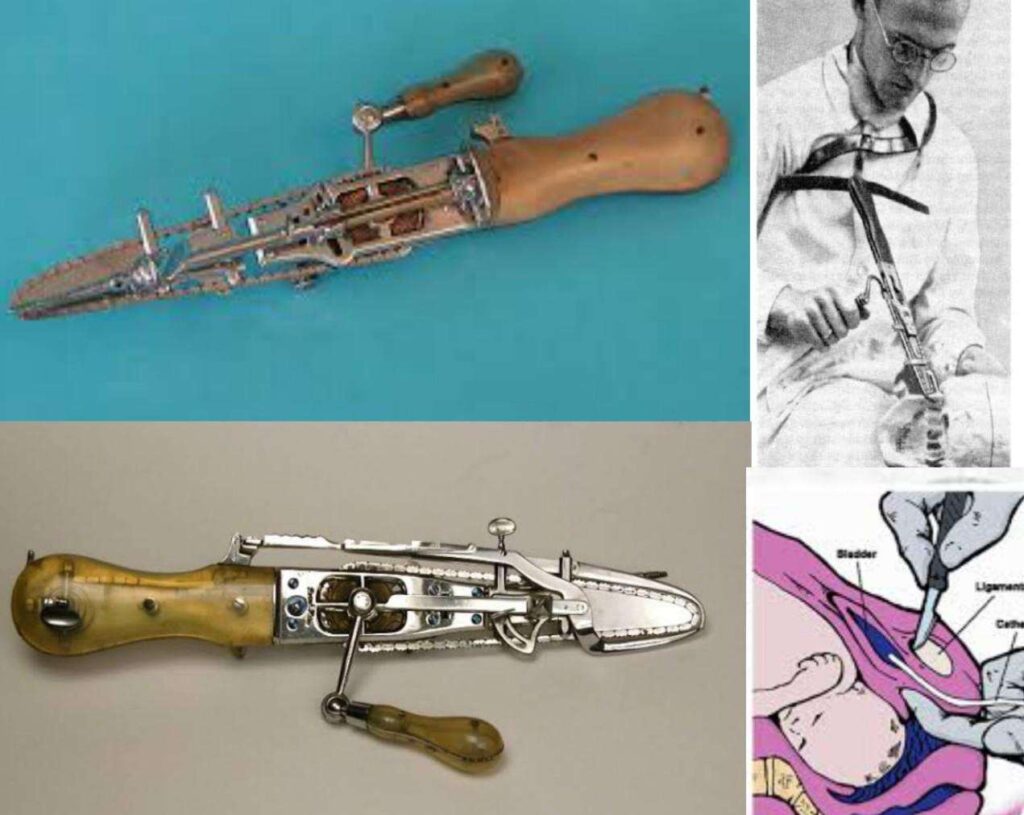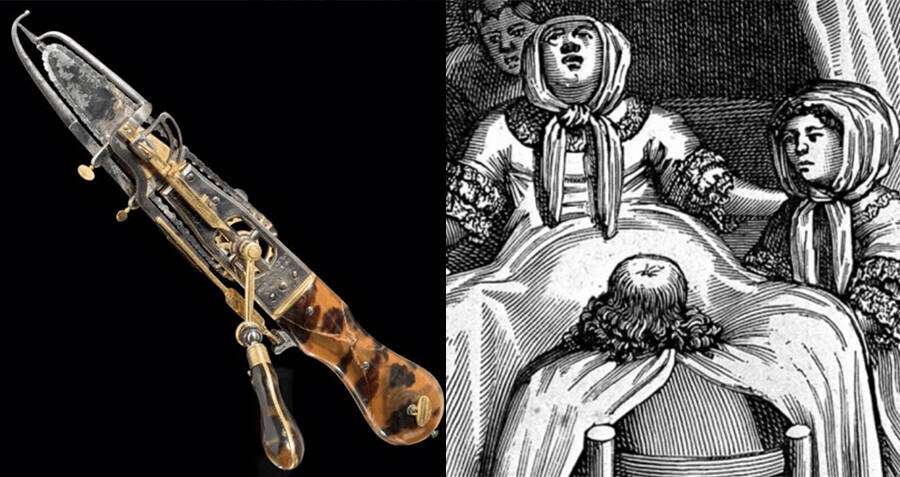Table of Contents
The first response may seem terrible, but it’s not nearly as terrible as it may sound. Chainsaws were first designed and put to use to assist laboring mothers in giving birth to their children. Checkout the shocking fact on why were chainsaws invented?
If a woman was giving birth to a baby in the breech position, or if the baby was ‘too large’ or stuck,’ a hand-cranked chainsaw with fine cutting teeth was used to cut through the lady’s cartilage and ligaments to extract the baby.
Consider this: in the days when cesarean sections were routinely performed, all deliveries of infants took place via the vaginal route.
These kinds of devices were required in particular situations. After hearing this, you may decide not to continue reading, but that was indeed the chainsaw’s primary use when it was first invented.
Why were chainsaws even allowed at the party?
My imagination immediately conjured up a picture of a contemporary chainsaw being used in a hospital operating room when I was told that the chainsaw’s initial purpose was to facilitate delivery.
Can you even fathom the thought of your doctor entering the delivery room while revving one of Stihl’s most powerful chainsaws? If this were the case, I do not doubt that the sight and sound of the chainsaw alone would be enough to induce labor in any mother, regardless of how obstinate the baby may have been.
However, as you can see in the photo of the first chainsaw that is located above this one, it is not like the chainsaws that we used to chop wood for the fireplace and falling trees. It resembles a huge knife with a chain attached more than anything else. Before employing this early version of a chainsaw, medical professionals would not have needed to wear chainsaw chaps or any other protective gear.
Chainsaw labor and delivery

In this picture, you can see the first chainsaw ever used; compare its size to that of a current chainsaw, and you’ll notice a significant difference.
Although it has very little in common with the commonly used today, modern chainsaws may be traced back to a medical chainsaw developed in Scotland by physicians named John Aitken and James Jeffray.
When it came to birthing, chainsaws were developed, but what use did they truly serve? The surgical treatment was called a symphysiotomy, and its definition is as follows: “an obsolete surgical operation in which the cartilage of the pubic symphysis is separated to enlarge the pelvis to facilitate delivery when there is a mechanical difficulty.”
However, a significant number of those who went through the process referred to it as “a slaughtering.” You may learn more about it by watching this movie uploaded to YouTube; it was practiced in Ireland not too long ago. As a result of the technique, many women suffered severe injuries, including the inability to walk for the rest of their lives after giving birth.
Possible complications during labor that required the use of a chainsaw to assist in delivery:
- When a baby is born breech, it means that they are coming out with their feet first.
- Shoulders trapped; a precarious position for both the mother and the child to be in.
- The failure of the baby’s head to pass through the birth canal may occur for several reasons.
In its early stages, the operation was performed without an anesthetic and could have included shattering bones. A greater number of people choose to have the surgery after the anesthetic development. We may count ourselves fortunate that the chainsaw has been replaced in modern delivery procedures by the cesarean section.
To recover the baby, a very modest and less invasive abdominal incision is done, as opposed to the more traditional method of trying to expand the pelvis.
Who was the first person to create a chainsaw?

Two Scottish physicians in the 1780s are credited with inventing and using the first chainsaw. John Aitken and James Jeffray were their names, respectively. They modeled their creation after watch chain teeth that could be adjusted using a manual crank.
This chainsaw was also put to use for a variety of other medical operations, including the following:
- Removing bones that have become infected.
- Surgical removal of diseased tissue and amputation of limbs.
Therefore, even if the first chainsaw was first utilized for medicinal purposes, similar to Leatherface in “The Texas Chainsaw Massacre,” we should be happy that this is not the case anymore. We also have reason to be glad because many innovative and business-minded people took this equipment and evolved it into what it is today, which we know and enjoy.
When did they finally stop putting women through labor with chainsaws?
Even though it has undergone significant development throughout the 1700s, the practice of using a medical chainsaw during delivery lasted in the West up until the late 1800s. It is believed to be still used in certain areas of the globe today when a cesarean section is not feasible, even though the Gigli saw has mostly replaced the usage of the original medical chainsaws.
In addition to removing flesh and bones from the dead, both the chainsaw and the Gigli saw were used to amputate limbs at one point in time; nevertheless, their initial aim was to assist mothers who were having difficulty giving birth to their kids.

